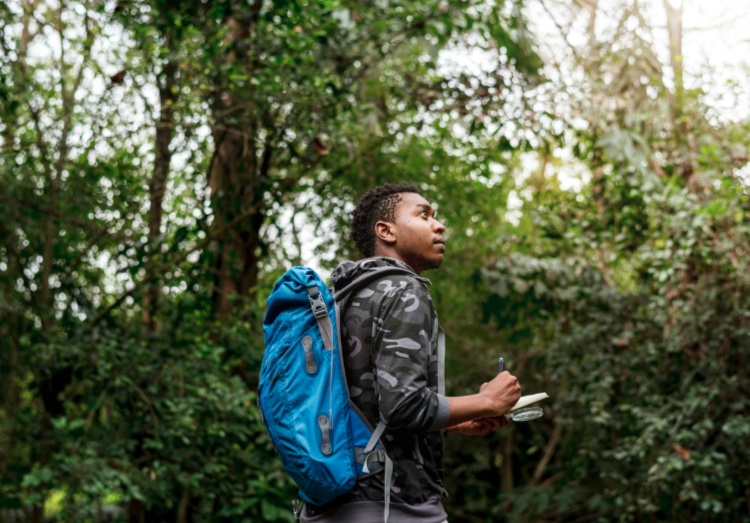The Amazon is the largest rainforest in the world. As well as the largest, it’s also home to an incredibly diverse range of animals and plants. As a result, the Amazon is integral to the ecosystem of the entire planet. Furthermore, the threat of global warming and deforestation mean that it is more important than ever to protect the rainforest. Thankfully, many people are eager to do their bit to save the jungle. Now, it’s become a popular choice for high school students to take a year out before university to volunteer on Amazon rainforest biodiversity conservation projects. Often, these projects are an incredible way to learn, share experiences, and help conserve this precious environment. Here, we share some Amazon facts, describe a typical day on a conservation project, and cover whether or not volunteering is right for you.
A few Amazon rainforest facts

The Amazon rainforest covers approximately 5.5 million square kilometers of South America. For scale, the United Kingdom and Ireland could fit into it 17 times. Furthermore, it’s the most species-rich ecosystem on the planet. Scientists are unsure as to the exact numbers, but it’s estimately the Amazon is home to 40,000 plant species, 3,000 fish, 1,300 types of birds, 430 mammal species and a mind-boggling 2.5 million types of insect. However, it isn’t just animals that make the Amazon such a fascinating place; the jungle is also very culturally rich. As it stands, anthropologists estimate there are at least 50 remote tribes that have almost no contact with the modern world.
Sadly, the Amazon is under threat. Every second, 1.5 acres of the jungle is cut down – which is sobering statistic. Even more tragically, scientists estimate that 137 plant and animal species become extinct every day. However, threats to the Amazon aren’t just local – they affect the entire world. Now, deforestation is responsible for 30% of global carbon emissions. This is why it’s incredibly important that people begin to do their bit to reduce their carbon footprint.
A typical day on a conservation project

Therefore, Amazon rainforest biodiversity conservation is an extremely pressing issue. If you’re interesting in science, the environment, and animal protection, then a gap year volunteering in the Amazon could be an amazing way to give back. There are many companies that organize trips, including Projects Abroad and Gap Year. Every project’s aims and objectives are different, but most encompass:
- Data collection on flora and fauna for biodiversity studies
- Assistance with animal rescue, care and release programs
- Insect studies, like endangered butterfly breeding projects
- Pilot farming, where groups work on sustainable ways to farm crops like avocados, bananas, and chillies
- Raising awareness about sustainability
Most projects ask for around four to six hours of your time on weekdays. Volunteers start work from around 8am before it gets too hot. The team with then take a long break during the heat of the day, then finish off in the afternoon. Weekends are free, where you can explore stunning surroundings.
Is volunteering on a Amazon rainforest biodiversity conservation project right for me?

Volunteering on an Amazon rainforest biodiversity conservation project is a fantastic gap year for intrepid explorers. If you love nature, animals, and the great outdoors, a gap year in the Amazon is a once in a lifetime experience. On top of doing your bit to save this precious place, volunteers can gain lots of practical experience – especially if your university course is in the sciences. However, you’ll need to be happy to get your hands dirty and forego some mod cons! That said, these are small sacrifices to make for an unforgettable experience.
No comments yet
There are no comments on this post yet.






Leave a comment